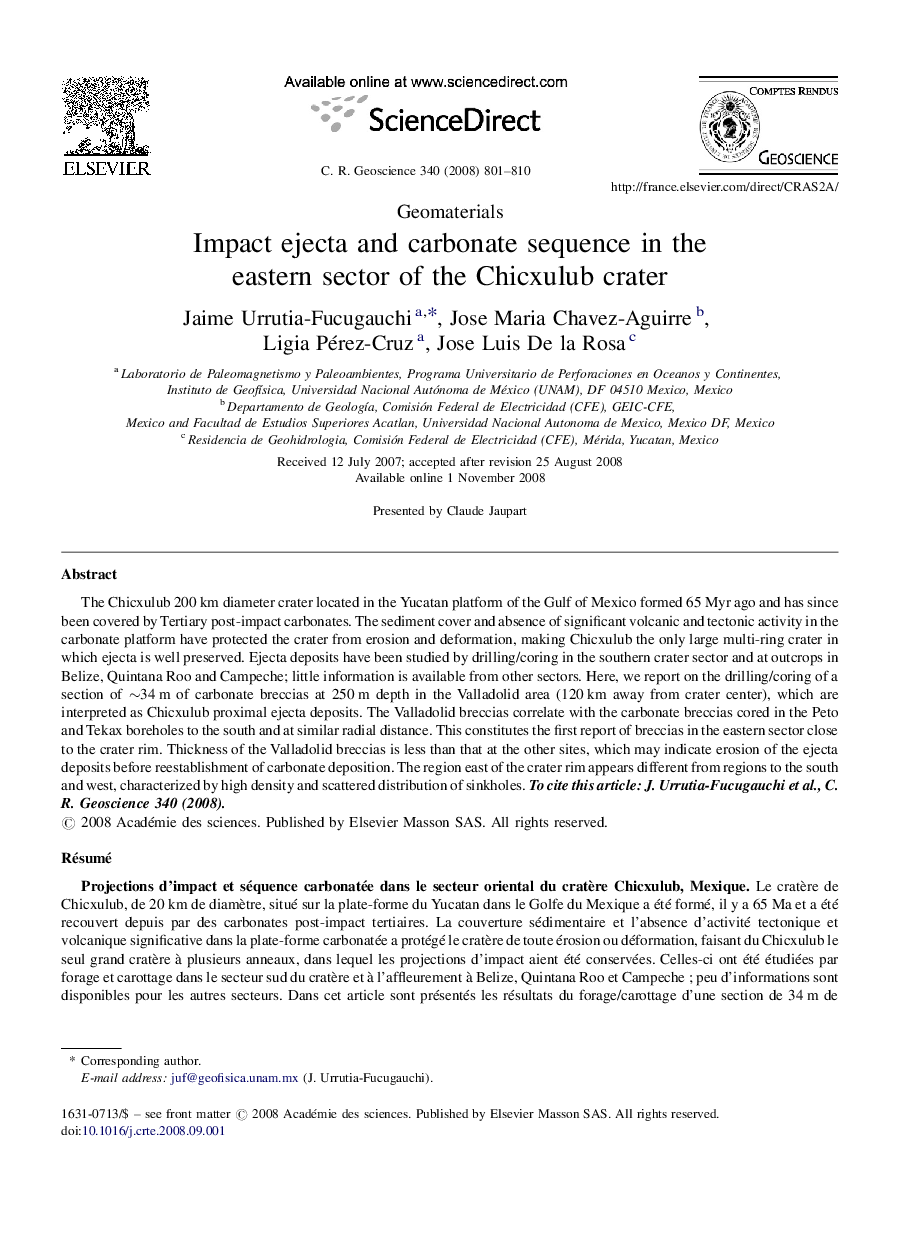| کد مقاله | کد نشریه | سال انتشار | مقاله انگلیسی | نسخه تمام متن |
|---|---|---|---|---|
| 4462733 | 1621574 | 2008 | 10 صفحه PDF | دانلود رایگان |

The Chicxulub 200 km diameter crater located in the Yucatan platform of the Gulf of Mexico formed 65 Myr ago and has since been covered by Tertiary post-impact carbonates. The sediment cover and absence of significant volcanic and tectonic activity in the carbonate platform have protected the crater from erosion and deformation, making Chicxulub the only large multi-ring crater in which ejecta is well preserved. Ejecta deposits have been studied by drilling/coring in the southern crater sector and at outcrops in Belize, Quintana Roo and Campeche; little information is available from other sectors. Here, we report on the drilling/coring of a section of ∼34 m of carbonate breccias at 250 m depth in the Valladolid area (120 km away from crater center), which are interpreted as Chicxulub proximal ejecta deposits. The Valladolid breccias correlate with the carbonate breccias cored in the Peto and Tekax boreholes to the south and at similar radial distance. This constitutes the first report of breccias in the eastern sector close to the crater rim. Thickness of the Valladolid breccias is less than that at the other sites, which may indicate erosion of the ejecta deposits before reestablishment of carbonate deposition. The region east of the crater rim appears different from regions to the south and west, characterized by high density and scattered distribution of sinkholes.
RésuméLe cratère de Chicxulub, de 20 km de diamètre, situé sur la plate-forme du Yucatan dans le Golfe du Mexique a été formé, il y a 65 Ma et a été recouvert depuis par des carbonates post-impact tertiaires. La couverture sédimentaire et l’absence d’activité tectonique et volcanique significative dans la plate-forme carbonatée a protégé le cratère de toute érosion ou déformation, faisant du Chicxulub le seul grand cratère à plusieurs anneaux, dans lequel les projections d’impact aient été conservées. Celles-ci ont été étudiées par forage et carottage dans le secteur sud du cratère et à l’affleurement à Belize, Quintana Roo et Campeche ; peu d’informations sont disponibles pour les autres secteurs. Dans cet article sont présentés les résultats du forage/carottage d’une section de 34 m de brèches calcaires à 250 m de profondeur dans la région de Valladolid (à 120 km du centre du cratère) ; celles-ci sont interprétées comme les dépôts proximaux des projections d’impact. Ces brèches calcaires se corrèlent avec celles qui ont été carottées dans les puits de Peto et de Tekax vers le sud, à une distance radiale similaire. Cela constitue la première occurrence. Comme dans le secteur est proche de la bordure du cratère. L’épaisseur des brèches de Valladolid est moindre que dans les autres sites, ce qui peut indiquer l’érosion des dépôts d’impact avant le dépôt des carbonates. Le secteur est de l’anneau du cratère apparaît différent des régions sud et ouest, caractérisées par une forte densité et une distribution dispersée de dolines.
Journal: Comptes Rendus Geoscience - Volume 340, Issue 12, December 2008, Pages 801–810